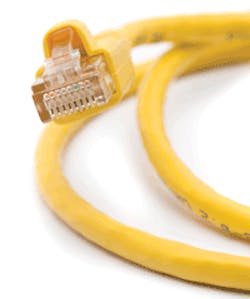Device-Level Ethernet Requires Careful Network Selection
As the market for industrial Ethernet at the device level continues to expand and the technology itself continues to develop, so too do the value propositions the network offers to its growing base of constituents. Ethernet as a platform for horizontal and vertical integration remains a significant driver behind continued growth. However, the stark contrast between using Ethernet as an integration platform versus a control network serving machine, motion or process control provides an indication of the growing range of potential applications—and iterations.
While the high-level industrial Ethernet value propositions of faster data rates, greater bandwidth and leveraging of largely commercial-off-the-shelf (COTS) technology cross all applications, disparities reduce the prospects for commonality, limiting ultimate business benefit. For example, while in some plants and factories the goal is to use industrial Ethernet as a horizontal and vertical integration platform, this is not practical for those that maintain a tiered approach to industrial networks.
ARC Advisory Group’s recently completed report confirms previous analyses of the market for Ethernet at the device level. These highlighted the benefits associated with Ethernet’s commonality versus openness—especially for customers focused on using industrial Ethernet as a platform for horizontal and vertical integration.
ON THE WEB: Industrial Ethernet Review. Have industrial Ethernet insights delivered to your desktop via our Industrial Ethernet Review Newsletter. Find back issues online. Visit bit.ly/aw_ier.
Manufacturers focused on Ethernet as an integration platform are typically more oriented toward use of a single common network to integrate all aspects of the enterprise via transmission control protocol/Internet protocol (TCP/IP) and concurrently running protocols. In these applications, industrial Ethernet eases and speeds system integration through the widespread availability and commonality of networked devices, COTS-based tools, ongoing development and standardization, and knowledgeable personnel. This potential benefit may be less important, however, to a machine builder focused on Ethernet-based real-time motion control solutions. These may employ common COTS-based tools and physical media, but displace TCP/IP with a real-time messaging protocol and use a gateway to interface the machine to a higher-level factory network.
Different breed of network
The fast-growing, real-time motion control/machine control segment leverages Ethernet’s features to achieve a performance leap over traditional serial device networks. Additional benefits, such as combined control and engineering design, installation and maintenance savings, and remote diagnostics and maintenance are also available.
Motion control applications leverage commercial Ethernet’s increasing bandwidth and data rates. But at the drive bus level, the network must also be able to coordinate multiple axes and feedback devices with the master controller. The reality is that many Ethernet-based motion control networks are implemented as drive or motion subnetworks that replace the TCP/IP portion of the stack with their own messaging interface or subvert it to the motion bus. These networks then interface to the larger factory network via a gateway.
Consequently, in these instances the Ethernet value proposition is primarily derived from the lower level of the stack as well as from use of COTS tools. Devices on the motion control network typically cannot interface directly to the Ethernet-based factory network or any other industrial Ethernet network. In this application space, it is not unusual to find homogenous, single-vendor networks with few if any third-party devices, even when the “standard” Ethernet-based motion control networks are used.
Process automation is another industrial segment in which Ethernet adoption at the device level is a current topic of discussion. Ethernet is well established at the control level in the process world and is just now starting to make its way into the field. These applications are typically in non-hazardous areas and take advantage of Ethernet’s broad bandwidth to communicate process values from high-end, multi-variable instrumentation. We expect the data acquisition (versus control) aspect of this segment to increasingly adopt industrial Ethernet and present its own distinct set of application requirements, further fragmenting the industrial Ethernet landscape.
Chantal Polsonetti, [email protected], is vice president, ARC Advisory Group in Dedham, Mass.
About the Author

Leaders relevant to this article:
